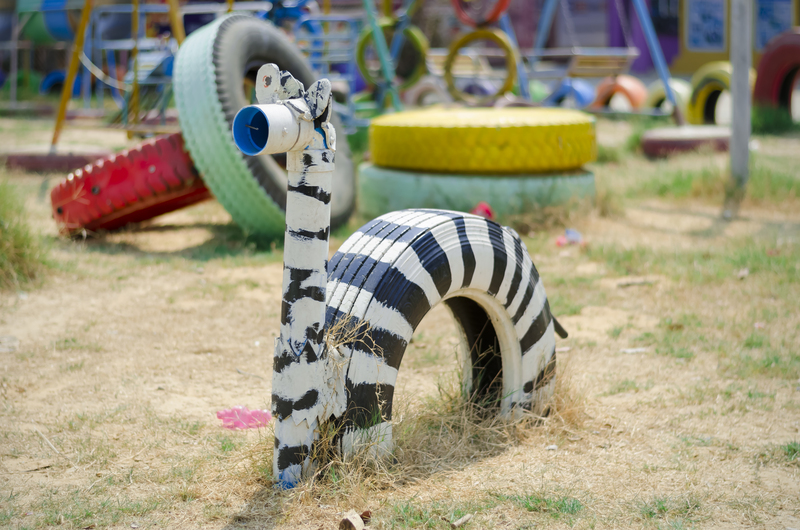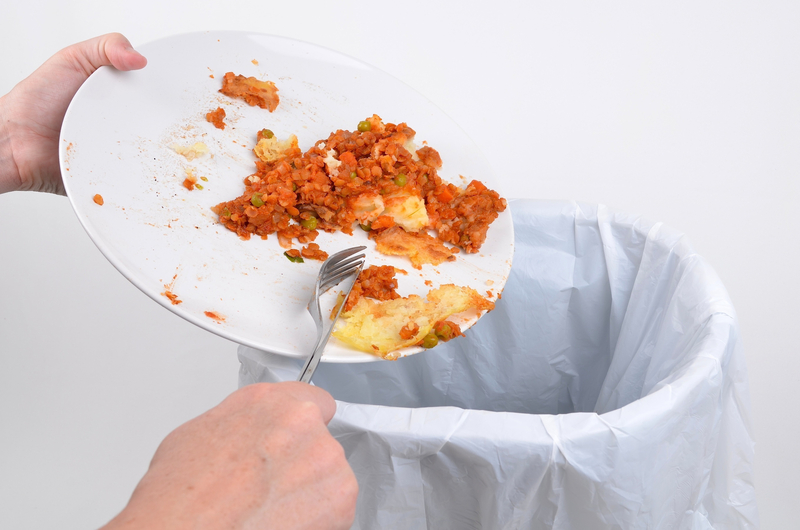Making the Most of Old Pots and Pans Through Creative Disposal
Do you have a growing collection of scratched, dented, or outdated cookware sitting unused in your kitchen cabinets? Instead of tossing your old pots and pans into the garbage, why not explore innovative and environmentally-friendly ways to give them a second life? In this article, we'll guide you through a variety of creative disposal ideas that bring new value to your worn-out cookware, reduce waste, and even add a unique touch to your home and garden. Discover how making the most out of old pots and pans through creative disposal can benefit your home, your community, and the planet.
Why Rethink Traditional Disposal of Old Cookware?
Every year, millions of tons of metal waste end up in landfills, with old pots, pans, and other cookware accounting for a significant portion of that figure. Many people throw these items away simply because they're no longer suitable for cooking, without realizing there are countless ways to repurpose, recycle, or upcycle them. Creative disposal not only extends the life of your cookware but also:
- Reduces the volume of waste heading to landfills.
- Helps conserve valuable natural resources.
- Prevents toxic substances (like Teflon) from polluting the environment.
- Offers opportunities for DIY projects and unique home decor.
- Supports charitable organizations and those in need.
Understanding What Makes Cookware "Old"
Before deciding which disposal method to pursue, assess the condition and material of your old pots and pans. Cookware is typically considered "old" when it:
- Has scratched or chipped nonstick surfaces.
- Is warped, dented, or otherwise misshapen.
- Is made of outdated or damaged materials (e.g., cracked ceramic, peeling enamel).
- No longer conducts heat evenly.
- Has lost handles, lids, or essential parts.
Understanding the material (such as aluminum, stainless steel, cast iron, or copper) is also important, as it can inform which creative disposal method is best suited for a particular item.

Top Creative Disposal Ideas for Old Pots and Pans
1. Repurposing Old Cookware for DIY Projects
One of the most popular and rewarding ways of making the most of old pots and pans is transforming them into DIY home decor and practical household items. Get inspired with these ideas:
- Planters and Flower Pots: Poke a few drainage holes in the bottom, paint the exterior, and fill with your favorite plants or herbs. Old pots and pans make quirky, rustic planters for both indoor and outdoor spaces.
- Wall Art: Arrange mismatched lids, pans, or skillets on the wall for an industrial or farmhouse-inspired statement piece.
- Bird Feeders and Baths: An upturned pan can become a shallow birdbath, while a suspended pot can serve as a creative bird feeder.
- Storage Organizers: Use deep pots to organize utensils, tools, or craft supplies. Smaller pans can sort desk accessories, office items, or toiletries.
- Clocks and Mirrors: Transform a skillet or pan into a unique wall clock or mirror by inserting a clock mechanism or attaching a mirror to the base.
2. Upcycling Pots and Pans as Garden Tools
Gardening enthusiasts will love the idea of making the most of their old cookware outdoors:
- Garden Markers: Paint the surfaces and write plant names to create long-lasting, weather-resistant garden markers.
- Compost Scoops: Use broken ladles or saucepans as handy scoops for soil, mulch, or compost.
- Wind Chimes: Old lids, spatulas, and pans can all be strung together to create whimsical garden wind chimes that tinkle in the breeze.
3. Donating Useful Cookware to Those in Need
If your pots and pans are still functional (not warped, cracked, or heavily damaged), consider donating them. There are many people, families, and organizations who can benefit from gently-used cookware:
- Homeless shelters and transition homes often accept kitchenware donations.
- Food banks and soup kitchens may need pots, pans, and bakeware to operate effectively.
- Charity thrift stores welcome cookware in good condition for resale.
- Check local community groups, dormitories, or youth organizations for donation requests.
Always check with the organization for their donation guidelines before dropping off items.
4. Recycling Old Pots and Pans Responsibly
Pots and pans made from metal (such as cast iron, stainless steel, copper, or aluminum) can usually be recycled, though not always in your curbside bin. Here's how to maximize sustainability through recycling:
- Contact your local recycling center first to confirm if they accept cookware and what materials are eligible.
- Separate non-metal parts (like plastic handles or Teflon coatings) before dropping off items.
- For nonstick pans, ask about hazardous material handling procedures, as some coatings can be toxic if not properly processed.
- Many scrap metal yards will accept pans and pots for recycling, regardless of condition.
- Some kitchenware brands offer their own "take-back" recycling programs for old cookware.
5. Selling Old Pots and Pans for Cash
Believe it or not, there is a market for certain types of old cookware, especially vintage or specialty items. Consider the following options:
- Vintage shops and collectors often seek out old cast iron, copper, and enameled cookware.
- Online marketplaces (like eBay, Craigslist, or Facebook Marketplace) allow you to sell gently-used pots and pans locally or nationwide.
- Some scrap metal yards pay cash by weight for aluminum, copper, or stainless steel pans--even if they are unusable in the kitchen.
Pro tip: Clean and polish your items before listing them to maximize their resale value.
Tips for Safe and Effective Pot and Pan Disposal
- Remove hazardous coatings: If disposing of nonstick pans, research whether your municipality requires special handling due to potential toxicity.
- Disassemble parts: Take off plastic or wooden handles, lids, and knobs, and recycle or repurpose them separately.
- Never burn old cookware to remove coatings or residues, as this releases dangerous fumes and pollutants.
- When upcycling, smooth sharp edges with sandpaper or a metal file to prevent injuries.
- For creative projects that require drilling or cutting metal, always wear protective gloves and goggles.
Inspiring Examples of Creative Pot and Pan Transformations
To encourage your own creativity, here are a few real-world projects where people have found exciting new uses for their old cooking equipment:
- Outdoor Light Fixtures: Larger copper or aluminum colanders can be transformed into stylish, rustic outdoor pendant lights.
- Patio Side Tables: Upside-down cast iron pots serve as sturdy, weatherproof bases for small outdoor tables.
- Children's Toys: Mini pans, once cleaned and sanded, become play kitchen accessories or musical instruments for kids.
The Environmental and Social Benefits of Creative Pot and Pan Disposal
When you make the conscious choice to recycle, repurpose, or donate old pots and pans--instead of simply throwing them away--you:
- Contribute to a circular economy, where resources are kept in use for as long as possible.
- Reduce your carbon footprint by diverting metal and non-biodegradable materials from landfills.
- Inspire community creativity and foster sharing through donations and group DIY projects.
- Help educational programs, artists, and young families who may not have the funds for new cookware.
- Preserve the memories associated with beloved, well-used pots and pans in your own home projects.

Frequently Asked Questions About Disposing of Old Cookware
Can nonstick pans be recycled?
*It depends on your local recycling facility.* Teflon and other nonstick coatings may need to be separated from the main pan body before recycling, and some centers accept only bare metal cookware. Check with your municipality or look for manufacturer take-back programs taking old nonstick pots and pans.
Is it safe to grow plants in old cookware?
Yes, with precautions! Avoid using pans with heavy flaking nonstick coatings, as these may leach chemicals. Line the interior with landscape fabric or food-safe liners if you have doubts about the cookware's composition.
Can old pots and pans be donated?
Many organizations accept gently-used cookware--but make sure they're in safe, usable condition. Avoid donating anything with large cracks, embedded food debris, or sharp edges.
What are some simple upcycling ideas for beginners?
Try turning an old pan into a wall clock, or use a large pot for storing garden hoses. Paint and hang mismatched lids as decorative accents, or use saucepans as rustic utensil caddies.
Conclusion: Give New Life to Old Cookware
Making the most of old pots and pans through creative disposal is not only a responsible choice--it's fun, rewarding, and can open up a world of artistic and practical possibilities. Whether you're repurposing, recycling, donating, or selling, you're helping the environment and adding your own style to your home and garden. Next time you're ready to toss a pot or pan, pause and consider: How can I creatively dispose of this item and make a difference?
Start today, and turn yesterday's cookware into tomorrow's treasures!